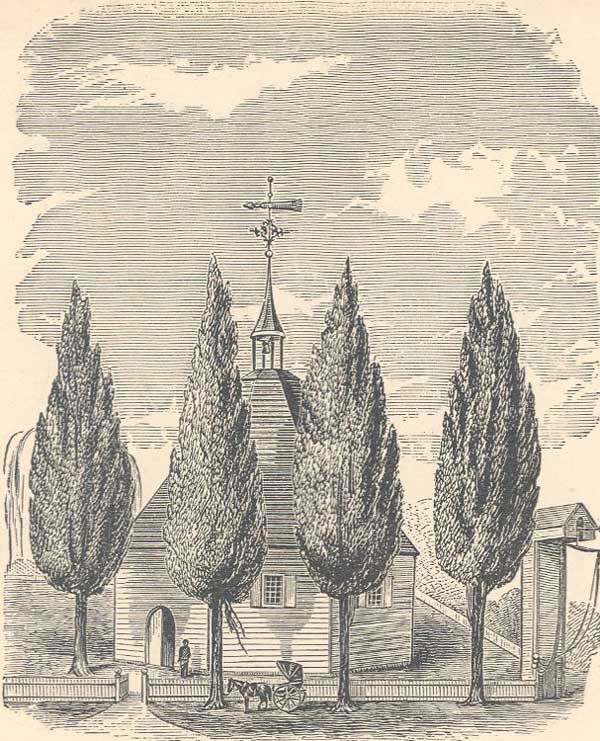
Jamaica History
Jamaica Avenue was an ancient trail for Native American tribes from as far away as the Ohio River and the Great Lakes, coming to trade skins and furs for wampum. It was in 1655 that the first settlers paid the Native Americans with two guns, a coat, and some powder and lead, for the land lying between the old trail and “Beaver Pond,” later called Baisley Pond. Dutch Governor Peter Stuyvesant dubbed the area Rustdorp in granting the 1656 patent. The English, who took it over in 1664, renamed it “jameco,” the Carnarsie word for beaver. And so, Jamaica was born.
Colonial Jamaica had a band of 56 Minute Men that played an active part in the Battle of Long Island, whose unfortunate outcome led to occupation by British troops during most of the Revolution. In Jamaica, “George Washington slept here” is indeed true—in 1790, in William Warner’s tavern. With independence, changes came rapidly to the area. When Rufus King, an author of the Constitution, returned from 7 1/2 years as ambassador to Great Britain, he bought the old Smith farmhouse and renovated it into a stylish home reflecting his Federalist tastes. Once the centerpiece of a 122-acre farm, the home housed three generations of the King family, including John Alsop King, elected governor of New York in 1856. King Manor is on the National Register of Historic Places. It is operated as King Manor Museum and is open to the public.
By 1776, Jamaica had become a trading post for farmers and their produce. For more than a century, their horse-drawn carts plodded along Jamaica Avenue, then called King’s Highway. The Village of Jamaica was incorporated in 1814; a year later the public school system was established with a budget of $125 for the first year. By 1834 the Brooklyn and Jamaica Railroad Company had a line into Jamaica. Jamaica Avenue, then Fulton Street, was, in 1850, a plank road with a toll gate; in 1866 the tracks were laid for a horse car line. Twenty years later those tracks were the first in the state to be electrified.

Jamaica Avenue was an ancient trail for Native American tribes from as far away as the Ohio River and the Great Lakes, coming to trade skins and furs for wampum. It was in 1655 that the first settlers paid the Native Americans with two guns, a coat, and some powder and lead, for the land lying between the old trail and “Beaver Pond,” later called Baisley Pond. Dutch Governor Peter Stuyvesant dubbed the area Rustdorp in granting the 1656 patent. The English, who took it over in 1664, renamed it “jameco,” the Carnarsie word for beaver. And so, Jamaica was born.
Colonial Jamaica had a band of 56 Minute Men that played an active part in the Battle of Long Island, whose unfortunate outcome led to occupation by British troops during most of the Revolution. In Jamaica, “George Washington slept here” is indeed true—in 1790, in William Warner’s tavern. With independence, changes came rapidly to the area. When Rufus King, an author of the Constitution, returned from 7 1/2 years as ambassador to Great Britain, he bought the old Smith farmhouse and renovated it into a stylish home reflecting his Federalist tastes. Once the centerpiece of a 122-acre farm, the home housed three generations of the King family, including John Alsop King, elected governor of New York in 1856. King Manor is on the National Register of Historic Places. It is operated as King Manor Museum and is open to the public.
By 1776, Jamaica had become a trading post for farmers and their produce. For more than a century, their horse-drawn carts plodded along Jamaica Avenue, then called King’s Highway. The Village of Jamaica was incorporated in 1814; a year later the public school system was established with a budget of $125 for the first year. By 1834 the Brooklyn and Jamaica Railroad Company had a line into Jamaica. Jamaica Avenue, then Fulton Street, was, in 1850, a plank road with a toll gate; in 1866 the tracks were laid for a horse car line. Twenty years later those tracks were the first in the state to be electrified.
Between 1920 and 1940 Jamaica Avenue commercial real estate boomed. The district included fine department stores, Gertz and Macy’s, and later May’s; the first modern supermarket, King Kullen; and a Spanish Baroque movie palace called the Loew’s Valencia Theater. The 1937 opening of the IND Subway under Hillside Avenue linked Jamaica with Manhattan and Brooklyn.
